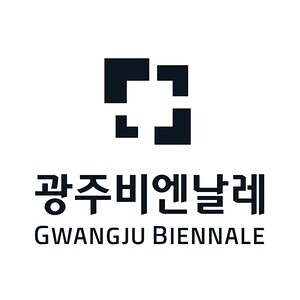14th Gwangju Biennale
April 7–July 9, 2023
The 14th Gwangju Biennale, soft and weak like water, announces the first participating artists and preliminary details on its curatorial themes, artist selection, artworks, venues and public program. Bringing together around 80 artists from different corners of the globe, the Biennale will present over 40 commissioned projects and new works. The Biennale is curated by Artistic Director Sook-Kyung Lee, alongside Associate Curator Kerryn Greenberg, and Assistant Curators Sooyoung Leam and Harry C. H. Choi.
The first participants to be announced are: Larry Achiampong, Abbas Akhavan, Farah Al Qasimi, Tarek Atoui, Bakhyt Bubikanova, María Magdalena Campos-Pons, Chang Jia, Latifa Echakhch, James T. Hong, Sky Hopinka, Huong Dodinh, Tess Jaray, Kang Yeon-gyun, Naiza Khan, Yuki Kihara, Christine Sun Kim, Kira Kim, Kim Kulim, Minjung Kim, Soungui Kim, Emily Kame Kngwarreye, Meiro Koizumi, Abdoulaye Konaté, Chila Kumari Singh Burman, Lee Kun-Yong, Lee Seung-taek, Kim Lim, Candice Lin, Tanya Lukin Linklater, Liu Jianhua, Guadalupe Maravilla, Noé Martínez, Mata Aho Collective, Mayunkiki, Alan Michelson, Małgorzata Mirga-Tas, Naeem Mohaiemen, Yuko Mohri, Betty Muffler, Aliza Nisenbaum, Lucia Nogueira, Oh Suk Kuhn, Oh Yoon, Oum Jeong Soon, Pangrok Sulap, Sopheap Pich, Taiki Sakpisit, Thasnai Sethaseree, Dayanita Singh, Buhlebezwe Siwani, Vivian Suter, Yu Jiwon, Yuma Taru, Charwei Tsai, Judy Watson, Alberta Whittle, Robert Zhao Renhui, David Zink Yi.
Themes and structure
The Biennale will explore its theme through four subtopics: Luminous Halo positions the spirit of Gwangju as a source of inspiration and model for resistance and solidarity; Ancestral Voices highlights transnational artistic approaches for engaging and interpreting traditions to question and challenge modernist ideas; Transient Sovereignty considers the ways in which post-colonial and de-colonial artistic thinking have developed in relation to issues such as migration and diaspora; and Planetary Times explores the potentials and limits of a “planetary vision” on ecological and environmental justice.
Participating artists
Artists who speak with lived experiences
soft and weak like water moves away from privileging singular views and ideas by employing the varied personal histories, experiences, and understandings of each participant. New works and commissions not only respond to the Biennale’s themes and proposition, but also reflect on the artist’s ongoing practice from an intimately personal, authentic position. For example, Sky Hopinka’s practice engages with his lived experience as a First Nations artist, concentrating on places and people that help him rethink his heritage in the present moment.
Korean artists from different generations
The 14th Gwangju Biennale features a careful selection of works by modern and contemporary Korean artists, whose varying perspectives on the past, present, and future of Gwangju and wider Korea complicate a homogenous understanding of the nation and its culture. Through a series of research-led commissions and loans from national collections, the Biennale also aims to expand the geographical and temporal framework of what is understood as “Gwangju spirit.” Chang Jia’s projects concentrate on socially prohibited customs as they relate to the female body, overturning implicitly accepted systems of conventions that govern the everyday.
Artists rethinking traditions
Highlighting fluid connections between traditions and cultures across geopolitical boundaries, the Biennale boasts a wide range of works by practitioners who engage with the mediums and languages deeply embedded in their respective cultures. The Biennale has commissioned Noé Martínez to develop a series of ceramic works that draw from sculptural forms found in the Huasteco community, which offers a sustained reading of the artist’s ancestral heritage. Tanya Lukin Linklater uses kohkom scarves that are worn by indigenous women of all generations in Canada, addressing the connections forged by a cultural artifact across temporally distant individuals.
Underrepresented women artists
The Biennale gives prominence to lesser-known women artists from different generations and cultural backgrounds. They include community elders from Aboriginal and Torres Strait Islander lands such as Emily Kame Kngwarreye and Betty Muffler to emerging voices from Almaty and Cape Town, many of whom are shown for the first time in Korea. Buhlebezwe Siwani’s practice uses the Black female experience within the South African context to address the lasting impacts of colonization and the suppression of indigenous knowledge.
Artists working with the history of Gwangju
Asking what it means to think of Gwangju as not only a geography or locality but also a paradigm and a manual, soft and weak like water seeks to reinterpret the waves of change the city and its people generated through contemporary art. Aliza Nisenbaum’s newly commissioned project will consist of paintings and drawings based on her collaboration with the Shinmyeong theater group in Gwangju. Sabah-based collective Pangrok Sulap is exploring the enduring legacies of the May 18 Democratization movement through the lens of woodcut printmaking. Soungui Kim is developing a multi-channel video installation, in which students from Chonnam Girls’ High School recite poems by important historic women writers of Korea.
The full press release including details on venues and the public program and images can be found here.
Press contacts
National contact: Elisa Lee, elisa.lee [at] gwangjubiennale.org
International contacts: Milly Carter Hepplewhite, milly [at] pelhamcommunications.com, and Yaz Ozkan, yaz [at] pelhamcommunications.com

